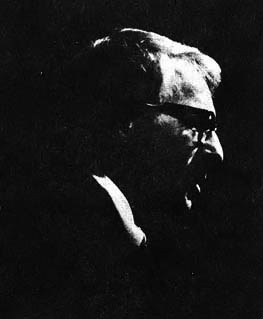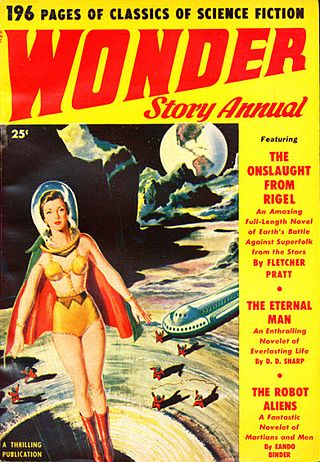Related Research Articles

Fahrenheit 451 is a 1953 dystopian novel by American writer Ray Bradbury. It presents a future American society where books have been outlawed and "firemen" burn any that are found. The novel follows in the viewpoint of Guy Montag, a fireman who soon becomes disillusioned with his role of censoring literature and destroying knowledge, eventually quitting his job and committing himself to the preservation of literary and cultural writings.

Patricia Oren Kearney Cadigan is a British-American science fiction author, whose work is most often identified with the cyberpunk movement. Her novels and short stories often explore the relationship between the human mind and technology. Her debut novel, Mindplayers, was nominated for the Philip K. Dick Award in 1988.

Richard Burton Matheson was an American author and screenwriter, primarily in the fantasy, horror, and science fiction genres.

Ray Douglas Bradbury was an American author and screenwriter. One of the most celebrated 20th-century American writers, he worked in a variety of genres, including fantasy, science fiction, horror, mystery, and realistic fiction.

Damon Francis Knight was an American science fiction author, editor, and critic. He is the author of "To Serve Man", a 1950 short story adapted for The Twilight Zone. He was married to fellow writer Kate Wilhelm.

"Time Enough at Last" is the eighth episode of the American anthology series The Twilight Zone, first airing on November 20, 1959. The episode was adapted from a short story by Lynn Venable, which appeared in the January 1953 edition of If: Worlds of Science Fiction.
Lester del Rey was an American science fiction author and editor. He was the author of many books in the juvenile Winston Science Fiction series, and the editor at Del Rey Books, the fantasy and science fiction imprint of Ballantine Books, along with his fourth wife Judy-Lynn del Rey.

Drexel Jerome Lewis Bixby was an American short story writer and scriptwriter. He wrote the 1953 story "It's a Good Life", which was included in The Science Fiction Hall of Fame. It formed the basis of a 1961 episode of The Twilight Zone and was remade in Twilight Zone: The Movie (1983). He wrote four episodes for the Star Trek series: "Mirror, Mirror", "Day of the Dove", "Requiem for Methuselah", and "By Any Other Name". With Otto Klement, he co-wrote the story upon which the science fiction movie Fantastic Voyage (1966), the related television series, and the related Isaac Asimov novel were based. Bixby's final produced or published work so far was the screenplay for the 2007 science fiction film The Man from Earth.
"The Cold Equations" is a science fiction short story by American writer Tom Godwin (1915–1980), first published in Astounding Magazine in August 1954. In 1970, the Science Fiction Writers of America selected it as one of the best science-fiction short stories published before 1965, and it was therefore included in The Science Fiction Hall of Fame, Volume One, 1929–1964. It has been widely anthologized and dramatized.
Social science fiction is a subgenre of science fiction, usually soft science fiction, concerned less with technology or space opera and more with speculation about society. In other words, it "absorbs and discusses anthropology" and speculates about human behavior and interactions.
Miriam Allen deFord was an American writer best known for her mysteries and science fiction. During the 1920s, she wrote for a number of left-wing magazines including The Masses, The Liberator, and the Federated Press Bulletin. Her short story, A Death in the Family, appeared on the second season, episode #2, segment one, of Night Gallery.

Henry Slesar was an American author and playwright. He is famous for his use of irony and twist endings. After reading Slesar's "M Is for the Many" in Ellery Queen's Mystery Magazine, Alfred Hitchcock bought it for adaptation and they began many successful collaborations. Slesar wrote hundreds of scripts for television series and soap operas, leading TV Guide to call him "the writer with the largest audience in America."

Clare Winger Harris was a pioneering science fiction writer whose short stories were published during the 1920s. She is credited as the first woman to publish stories under her own name in science fiction magazines. Harris began publishing stories in 1926 and soon became popular with readers, with most of her fiction appearing in the influential magazine Amazing Stories. She published a total of twelve stories, all but one of which were collected in 1947 as Away From the Here and Now; a full collection was not published until 2019 when The Artificial Man and Other Stories appeared. Her stories, which often feature strong female characters, have been reprinted in anthologies such as Library of America's The Future Is Female! 25 Classic Science Fiction Stories by Women and Wesleyan University Press's Sisters of Tomorrow: The First Women of Science Fiction.

The following is a list of works by Ray Bradbury.
Robin Wayne Bailey is an American writer of speculative fiction, both fantasy and science fiction. He is a founder of the Science Fiction Hall of Fame (1996) and a past president of the Science Fiction and Fantasy Writers of America.

Harl Vincent was the pen name of Harold Vincent Schoepflin, an American mechanical engineer and science fiction author. He was published regularly in science fiction pulp magazines.

Wonder Story Annual was a science fiction pulp magazine which was launched in 1950 by Standard Magazines. It was created as a vehicle to reprint stories from early issues of Wonder Stories, Startling Stories, and Wonder Stories Quarterly, which were owned by the same publisher. It lasted for four issues, succumbing in 1953 to competition from the growing market for paperback science fiction. Reprinted stories included Twice in Time, by Manly Wade Wellman, and "The Brain-Stealers of Mars", by John W. Campbell.

Mari Wolf was an American science fiction writer and magazine columnist. She is credited with the first use of the word "droid" for a robot, in a science fiction story.
Garen Lewis Drussai was an American science fiction and mystery writer, born Clara Hettler.
References
- 1 2 3 Angela Hill, "Give'm Hill: El Cerrito Woman Lends 'Twilight Zone' Inspiration" Mercury News (December 26, 2012).
- ↑ Lynn Venable, "Time Enough at Last" If Magazine (January 1953).
- ↑ Don Presnell and Marty McGee, A Critical History of Television’s The Twilight Zone, 1959–1964 (McFarland 2015): 39-41. ISBN 9781476610382
- ↑ Forrest J. Ackerman and Pam Keesey, eds., Womanthology (Sense of Wonder Press 2003). ISBN 0918736331
- ↑ Evelyn E. Smith, Ann Walker, Barbara Constant, eds., Women Resurrected: Stories from Women Science Fiction Writers of the 50s (Resurrected Press 2011). ISBN 9781937022068
- ↑ Mercè Cuenca, "'The Most Dangerous Enemy of Truth and Freedom': 'Fahrenheit 451' and the Enforcement of Innocence in Early Cold War America" in Cynthia Stretch, Cristina Alsina Rísquez, eds., Innocence and Loss: Representations of War and National Identity in the United States (Cambridge Scholars Publishing 2014): 136-138. ISBN 9781443860697
- ↑ Eric Leif Davin, Partners in Wonder: Women and the Birth of Science Fiction, 1926-1965 (Lexington Books 2005): 412. ISBN 9780739158685
- ↑ "Dear Abby" advice column, Northwest Herald (October 11, 1988): 13. via Newspapers.com
